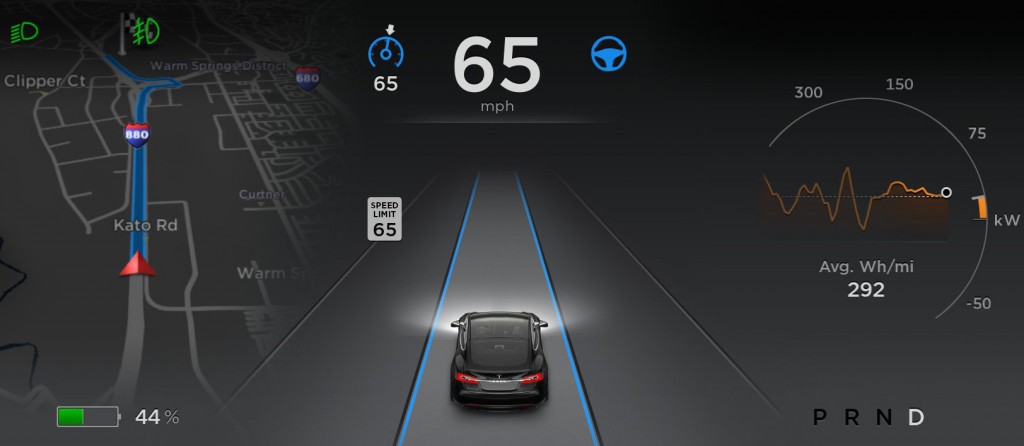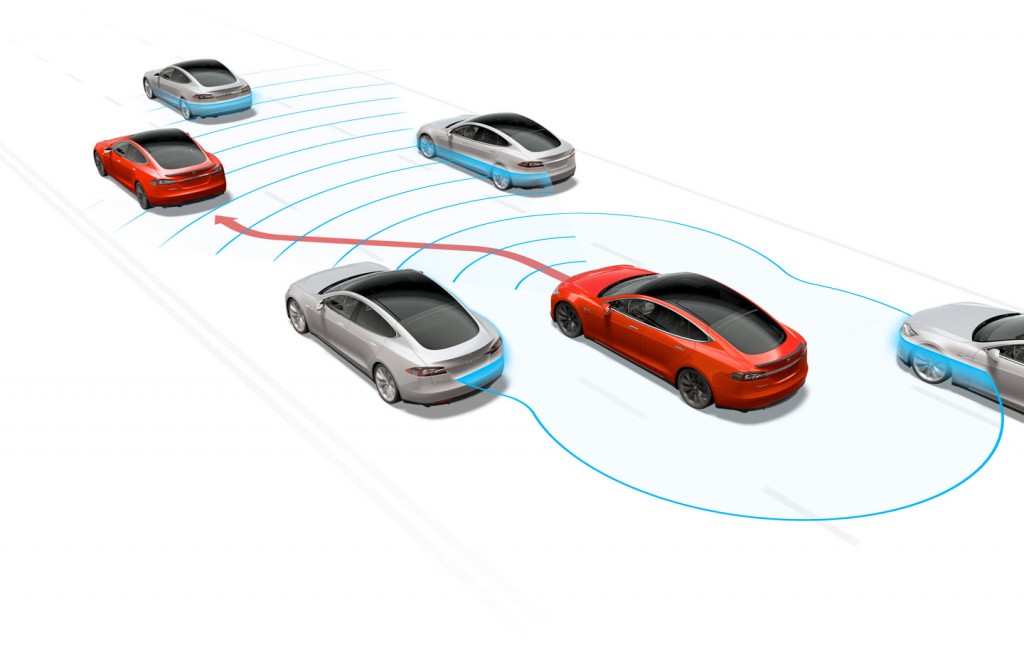Tesla's "Autopilot" system can do some impressive things.
It can steer a car through traffic, and execute passing maneuvers with no involvement from the driver other than a flick of a turn-signal stalk.
But while it does enable some autonomous driving, Autopilot does not turn a Tesla Model S or Model X into a self-driving car.
DON'T MISS: Tesla Autopilot: The 10 Most Important Things You Need To Know (Oct 2015)
Autopilot's capabilities are limited, and Tesla was quick to emphasize those limits when it released the system in "public beta" form last October.
At the time, Tesla CEO Elon Musk said Autopilot worked most effectively in dense traffic, on roads with very clear lane markings.
Even in a best-case scenario, though, he advised drivers to keep their hands on the wheel and stay alert at all times.

Tesla Autopilot suite of features - with version 7.0 update
Aside from its functional limits, Autopilot is also missing a feature crucial to self-driving cars.
Autopilot isn't connected to a car's navigation system, so it can't simply follow a route while the driver takes a nap, notes a recent Forbes review of the tech.
ALSO SEE: Tesla CEO Musk Seeks 'Hardcore' Engineers To Beef Up Autopilot Software (Nov 2015)
That puts Autopilot very low on the scale of vehicle autonomy defined by the U.S. National Highway Traffic Safety Administration (NHTSA).
The scale includes five levels of autonomy, and seeks to clarify the difference between fully-autonomous cars and vehicles with some autonomous capabilities.
Level 0 means a car has no autonomous systems to speak of, or advanced driver aids that intervene to provide assistance.

Tesla Autopilot sensor system
A Level 2 vehicle features automation of at least two control functions that work together, allowing the driver to cede limited control.
With its ability to maintain a set distance from a car ahead and keep a car centered in its lane, Autopilot seems to fall into this category.
MORE: Secret Tesla software updates simulate new Autopilot abilities on customers' cars
To move up to Level 3 autonomy, a car would have to be able to follow a route and drive itself without any human involvement, albeit only in certain situations.
Cars with Level 3 autonomy still require a human driver onboard ready to take over.
Finally, Level 4 defines a car that can drive itself over an entire trip, with a human occupant only selecting a destination.

2016 Tesla Model S
Engineers currently download data from customer cars to see how the system behaves in the real world.
They also use special software to run simulations of new Autopilot features on customers cars as those cars travel down the road.
_______________________________________________












